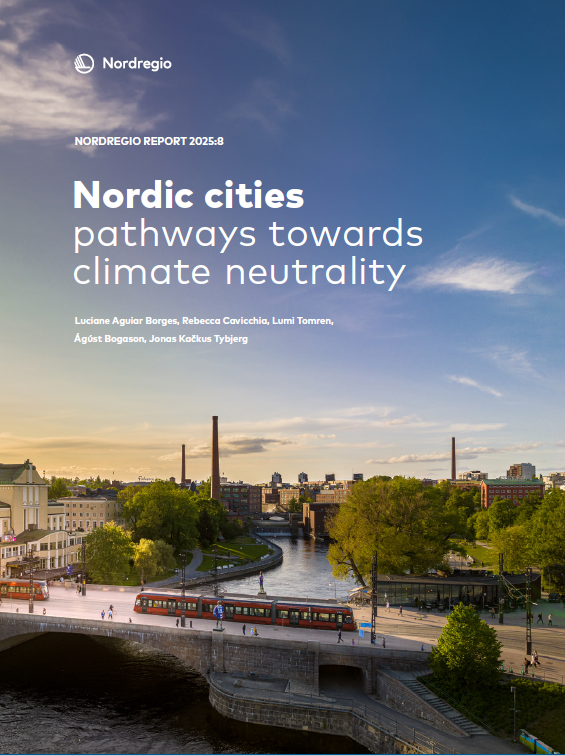Cities are at the forefront of the global fight against climate change. With seven out of ten people projected to live in urban areas by 2050 (UN, 2018) and cities already accounting for 70% of global greenhouse gas emissions, the stakes could not be higher. Urban areas are expanding faster than their population growth, posing major risks to climate targets, but also opening a critical window for sustainable innovation. Cities account for over 80% of global GDP (World Bank, 2023), giving them significant potential to drive climate action while maintaining economic growth.

Nordregio’s new report, “Nordic cities: pathways towards climate neutrality”, the final product of the Nordic Climate Neutral Cities (NCNC) project, funded by the Nordic Council of Ministers, offers insights for both national and local policymakers and planners. It explores how Nordic cities use spatial urban planning to move towards climate neutrality through three specific sectors: land use, transport, and building and construction.
Political will and practical barriers
Nordic cities are well-positioned for climate neutrality, thanks to strong political will, energy-efficient building traditions, investments in sustainable mobility, and growing citizen participation. Their strong institutional and financial capacity, supported by municipal autonomy and access to renewable energy, offers a solid foundation for climate action.
Yet, our research also shows the challenges slowing the transition. Multilevel governance challenges, coordination gaps within municipalities, fragmented land use planning, and inconsistent building regulations slow progress. Financing for building retrofits is often inadequate, increasing the risk of energy poverty. Public preferences for traditional housing forms may also conflict with climate goals. Limiting cars in urban areas is still a politically sensitive issue in several Nordic municipalities.
As the report states, “Nordic cities have many of the right ingredients for climate neutrality, but overcoming ingrained systemic barriers will require new forms of collaboration and more targeted policies”.
Multilevel governance, policy and institutional capacity
To accelerate progress, the report highlights five priorities: strengthening multilevel governance, prioritising public engagement, boosting mobilisation for climate efforts, expanding taxation and regulatory frameworks, and harmonising emissions calculations across the Nordic Region.
“Our report shows that all cities, frontrunners and strivers, are actively working towards climate goals. The main barriers lie in the multilevel governance conflicts concerning both legislative and financial aspects”, report author and senior researcher Rebecca Cavicchia, explains.
While sharing some common features, the nine case studies on medium-sized cities, also reveal distinct, context-specific challenges and approaches. The report categorises these cities as either “frontrunners” or “strivers,” based on their approach to sustainable urban growth and commitment towards climate neutrality.
Aarhus, Växjö, and Reykjavík are identified as frontrunners, and they are all densifying and testing new approaches. Aarhus is actively calling for stronger national climate regulation and has developed a “mobility toolbox” to support green transport planning. Växjö stands out for its leadership in sustainable wood construction. In Reykjavík, a Bus Rapid Transit (BRT) system is being introduced to strengthen the city’s public transport network.
“Cities across the Nordic Region are setting more ambitious climate targets than their national governments. In Norway, for example, some municipalities aim for an 80% emissions reduction by 2050, compared to the national target of 55%, showing strong local political commitment and mobilisation”, Rebecca Cavicchia explains.
Striver cities also provide valuable insights. These municipalities may have fewer resources or face geographic and political constraints. Oulu illustrates the challenge of applying national strategies in lower-density northern contexts, where dispersed housing and low critical mass limit sustainable transport options. Kristiansand is working to balance densification with affordability amid political debates over land use. Rebecca Cavicchia concludes:
“The reach climate neutral Nordic cities, we need stronger policy coordination, targeted funding, and Nordic joint platforms for knowledge exchange, especially to support smaller municipalities in Norway, Iceland, and beyond.”






